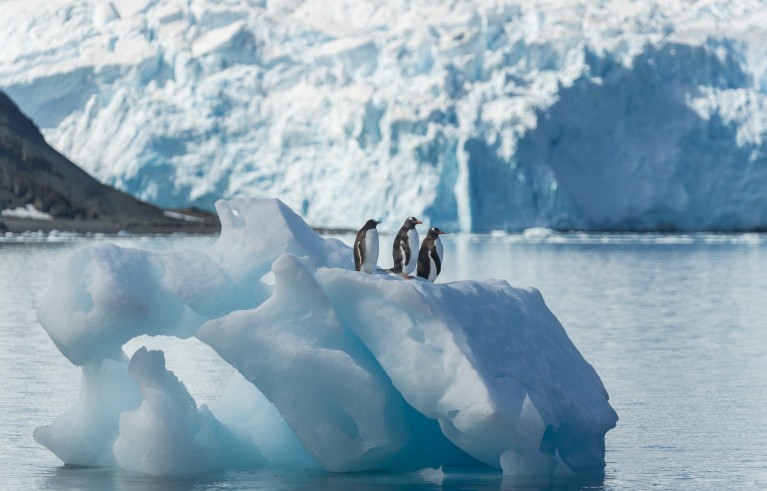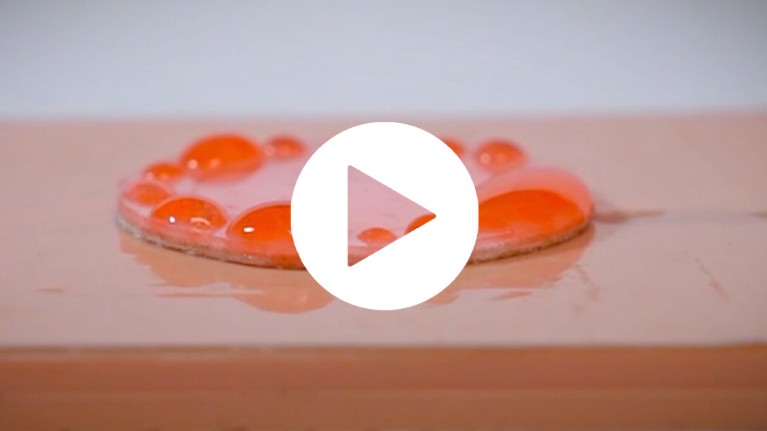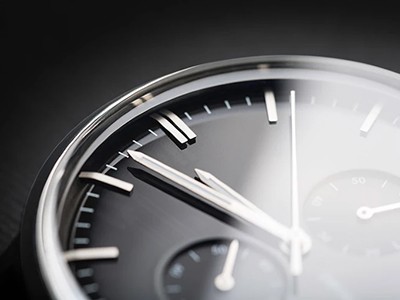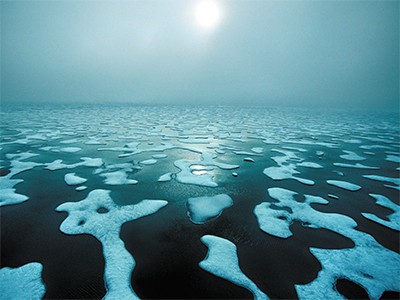[ad_1]
Hello Nature readers, would you like to get this Briefing in your inbox free every day? Sign up here.

As polar ice has melted and moved mass towards the Equator, it has slowed Earth’s rotation.Credit: Alessandro Dahan/Getty
Melting ice caps are slowing the rotation of the Earth and could delay the next leap second by three years. Adding or removing seconds every few years keeps official atomic-clock time in line with the natural day, which varies slightly in line with the planet’s rotation rate. Since the early 1990s, the flow of water away from Earth’s axis of rotation and towards the Equator has worked to slightly slow down its spin. “It’s yet another way of impressing upon people just how big a deal [climate change] is,” says geophysicist and study author Duncan Agnew.
Earlier this month, editors at the linguistics journal Syntax publicly announced their resignations in response to changes to the manuscript-handling process imposed by its publisher, Wiley. The move is the latest in what seems to be an emerging form of protest: the mass resignation of academic editors. Many such events are in response to changes to business models in the publishing industry. “The big theme [of mass resignations] is this tension of competing priorities,” says Ivan Oransky, co-founder of Retraction Watch.
Antibodies rejuvenate immune responses in old mice by targeting stem cells that replenish white and red blood cells. The balance of these stem cells changes as mice (and humans) age — this might be one reason why older animals mount less of an immune response against pathogens. Aged mice that received the antibody treatment had a stronger reaction to vaccination, and were better able to fend off viral infection, than untreated rodents.
Read an expert analysis by developmental biologist Yasar Arfat Kasu and stem-cell biologist Robert Signer in the Nature News & Views article (8 min read, Nature paywall)
Features & opinion
Injecting particles into the upper atmosphere could deflect some sunlight back into space — but experiments to test this remain controversial. Recently, Harvard University cancelled their solar geoengineering project amid opposition. Advocates say geoengineering might one day provide emergency relief from the worst impacts of climate change. Critics argue that artificially cooling the planet could have unintended consequences and that the idea could reduce pressure on leaders to tackle climate change. “For better or worse, momentum is growing in this space,” says environmental engineer Shuchi Talati.
The Chipko movement, named after the Hindi word ‘to cling’, began 50 years ago this week when Gaura Devi, an ordinary woman from a village in the Western Himalayas, hugged a tree, using her body as a shield to stop the tree from being cut down. The Chipko movement led to India’s Forest Conservation Act of 1980, and a 15-year moratorium on tree felling. But the villagers’ dreams of bottom-up development never materialized. “Ironically, Chipko, which had set these laws in motion, resulted in local communities losing access to the very forests that met their livelihood and subsistence needs,” writes sustainability researcher Seema Mundoli. Yet Chipko continues to inspire other protest movements led by marginalized communities today.
Author Rodrigo Culagovski has a murderous time grappling with mind-bending time-travel paradoxes in the latest short story for Nature’s Futures series.
A moisture-wicking adhesive patch makes wearable electronics more comfortable and stops them from losing signal quality or falling off when the user is sweating. A material that channels perspiration to the edges of the patch ensures that electronic components in the centre stay dry. In a week-long test, a sweat-wicking electrocardiogram (ECG) patch provided stable heart-rate readings, stuck to the skin better and was cooler to wear than other ECG patches.

This week, Leif Penguinson is visiting the mangroves in the Princess Alexandra National Park on the Turks and Caicos Islands. Can you find the penguin?
As always, thanks to Briefing photo editor and penguin wrangler Tom Houghton for his efforts convincing Leif to cling, lounge and hang in such surprising locations each week.
Flora Graham, senior editor, Nature Briefing
With contributions by Gemma Conroy, Katrina Krämer and Sarah Tomlin
Want more? Sign up to our other free Nature Briefing newsletters:
• Nature Briefing: Anthropocene — climate change, biodiversity, sustainability and geoengineering
• Nature Briefing: AI & Robotics — 100% written by humans, of course
• Nature Briefing: Cancer — a weekly newsletter written with cancer researchers in mind
• Nature Briefing: Translational Research covers biotechnology, drug discovery and pharma
[ad_2]
Source Article Link




